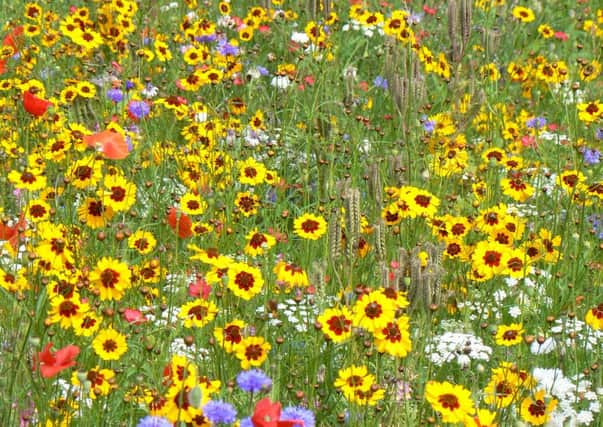Meadows that brighten dull urban landscapes


Developed by Sheffield University’s Landscape Department, these features are a relatively new horticultural technique to turn difficult and dull roadsides and central reservations or roundabouts into stunning vistas of colour with instant impact.
They have been termed urban ‘meadows’ which really is not the case as a ‘meadow’ is a particular type of plant community generated and maintained by traditional farming management.
Advertisement
Hide AdAdvertisement
Hide AdThe plants are mostly perennials with vegetation maintained by cutting of hay and often by grazing after the cut. This regime produces some of the most species-rich and prettiest landscapes we have, and sadly, today is rather rare.
These new horticultural landscapes are annual cornfield surrogates with exotic flowers and they can be a fantastic way to trigger urban transformation. Of course, you can do a similar thing with native cornfield weeds like poppies, corncockle, cornflower, and corn marigold. An organisation called Landlife in Liverpool, based at the National Wildflower Centre, involve local kids in transforming large areas of derelict urban landscapes with native flowers.
There is some confusion with people seeing these as ‘wildflower’ mixes and conservation meadows, which they are not.
They can benefit wildlife such as insects by providing opportunities for pollen and nectar in their abundant flowers.
Advertisement
Hide AdAdvertisement
Hide AdHowever, generally being composed of exotic plants, these do not offer food plants for native butterflies, moths or other insects. In this basic aspect of ecological function, these communities cannot deliver the conservation benefits of, say, a relict, native, wildflower meadow, pasture, or other grassland. I see these new horticultural flower communities as one approach to urban greenspace sitting alongside the conservation of natural and semi-natural communities. In fact, at present, we are not doing a desperately good job of conserving these relict and decreasing conservation sites.
Some of our best areas are in the older parklands like Graves Park, and along roadsides like the Bochum Parkway at Norton. In these areas, management ignores their existence.
Surprising really, since these areas and their conservation should underpin claims to sustainability –even more so, because they occur naturally, are irreplaceable, and are free.
But many things that are ‘free’, we just take for granted. We also have psychological problems with meadows, cornfield annuals, and similarly ‘pictorial meadows’, when to enjoy colour and diversity you must accept the fallow times. Unreasonably, we expect greenery and colour all year round.
Advertisement
Hide AdAdvertisement
Hide Adn Professor Ian D. Rotherham, researcher, writer and broadcaster on wildlife and environmental issues, is contactable on [email protected]; follow ‘Ian’s Walk on the Wildside’, www.ukeconet.org for more information.
w